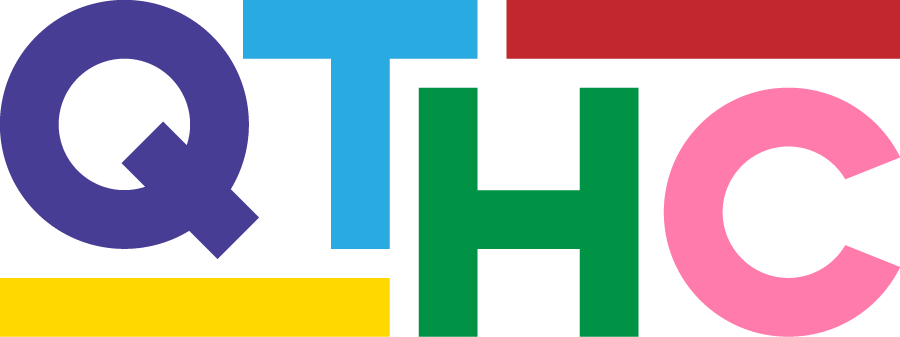SHIFTING THE CONVERSATION WITH STREETWORKS
In 2018, as part of our Opioid Awareness project, run in partnership with Fruit Loop and Edmonton 2 Spirit Society, we sat down with one of our Community Naloxone Training partners, Mathew Wong of Streetworks, to discuss the current opioid crisis. Read on to learn more about Alberta’s opioid overdose, what might be driving it, who it impacts, and how we can respond to it more effectively. [Note: This transcript has been lightly edited for length and clarity]
Interviewer: Can you describe what you do for Streetworks?
Mathew: My official title at Streetworks is the Team Lead of the Overdose Prevention Team. I am an RN by background and our team is dedicated to the huge goal of preventing and reducing overdose and eliminating death from overdose in the community we serve.
What services does Streetworks provide to the community?
Streetworks is Edmonton’s needle exchange program. We provide all the supplies one might need if they do drugs. In addition to needles, we provide things like tourniquets, alcohol wipes, and sterile water. We are just trying to keep people as healthy and safe as possible, no matter where they’re at in their life. Our funding is primarily related to HIV, so preventing HIV and Hepatitis C is a big part of our work. At a deeper level, though, we are trying to connect with people who might not have any other similar connections.
The opioid crisis has been recognized as a problem for years in Canada, and yet there are still many lives that continue to be taken by opioid overdoses. In fact, from 2016 to 2017, opioid-overdose deaths increased by approximately 40% in Alberta. Based on your experience working with Streetworks, why do you think this is?
That’s a tough one. If you were just to look at that on the surface it could be disheartening. We’re doing more. We have naloxone kits out there. But we see the numbers increasing. I think it speaks to the number of people we’re not reaching and the hiddenness of substance use. That, and the fact that if a person is going to start using opioids, right now would be one of the most dangerous times because you have a really potent opioid out there that comes in a variety of strengths. Even guys with super high tolerances are affected sometimes.
Speaking to the “hidden” factor that you mentioned, it’s not necessarily the stereotypical person one would think uses opioids. Are there any particular demographic groups that you see as being at higher risk and/or in need of help? What have you observed as some of the most prominent precipitating factors of opioids addiction?
It’s hard to pinpoint. Statistics show that some areas of our city are more affected than others. And race does factor in as well. But, really, it cuts across all walks of life, affecting people from a range of backgrounds, with a range of incomes. I would say the person who is mostly at risk is someone who doesn’t think they are at risk.
This can come in many forms. It could be the person who is straight out of treatment thinking, “I’ve dealt with my addiction and I’m never going to use again.” That person is at risk because the literature suggests that it’s during the first 30 days after detox that a person is about 37x more likely to overdose because they have a lower tolerance to opioids. Or maybe it’s a person in a suburb in Edmonton who thinks, “I don’t have a problem like those people. I just use it recreationally”. But we know that they could be using drugs that were accidentally contaminated with fentanyl. Or maybe, while they typically wouldn’t use opioids, while high on something else, they might be inclined to try something that they don’t normally take. So, one of the best things you can do is instead of thinking about those people at risk, humbly accept that we’re all at risk.
Regarding the precipitating factors of opioid addiction, I think the common narrative is that there is a person who has an accident, they end up in a hospital, they are given prescription painkillers, and their tolerance builds up. Eventually, they get cut off. So, they end up on the street. That narrative is a pretty common one. But there are other ways people come about opioid addiction. An example one gentleman shared with me was the first time he used heroin. He was on a school bus and the person across from him just happened to be injecting and invited him to try it. He said, “I fell in love. In so many parts of my life I felt isolated and alone.” For him, injecting that heroin felt like love going through his veins. He finally felt warm; comfortable. That’s one example from the other side of the spectrum, demonstrating the variety of experiences which can lead to someone ending up with an opioid addiction.
What does current messaging of opioid use to the public look like to you? Does this messaging need to change, and if so, how?
Where we’re at is where we’re at with a lot of drug education. It’s very focused on the negative effects, and often exaggerates them. “Don’t use drugs. Don’t use fentanyl or you’ll die.” Well, first of all, this approach can hurt your credibility with people who use drugs. Many people have used drugs, including fentanyl, and haven’t died. So, if you use that messaging, they might find it manipulative or feel that you don’t know what you’re talking about, which might not make them want to engage with you. Also, when you start with the most extreme messaging – “don’t do drugs or you’ll die” – you cut off the conversation right there. You don’t open opportunities for conversations about harm reduction such as, “never use alone, do a tester, be careful after breaks from using.”
Now they have begun to shift some of the ads, which is a step in the right direction. What we want to do is to shift larger society’s view of the person who uses drugs. Instead of, “Don’t use drugs or don’t use fentanyl or you’ll die,” there is more messaging which communicates, “We care about you, we love you, carry naloxone with you, be safe out there.” It shifts our view of people who use drugs: “You’re valuable even if you use drugs. You are valuable as a person who uses drugs. You are cared for and we love you.”
Once that messaging solidifies, people will feel more comfortable speaking about their drug use instead of experiencing isolation due to stigma. A group I’d give a shout out to is the Moms Stop the Harm group. It is a group of parents who’ve lost their kids to overdose or whose kids are currently using. They are very harm reduction focused. Instead of just focusing on trying to get kids to stop using drugs, they support various harm reduction initiatives and policy changes like decriminalization. They’re a group of parents who you’d never have guessed had kids who dealt with substance use issues; just everyday people from all sorts of backgrounds. From sharing their stories, more people have begun to share their stories as well. They’ve been very effective at breaking down stigma.
Practically speaking, how effective is Naloxone at saving lives?
Naloxone can be very effective at preventing an overdose. Besides the scientific evidence, we’ve had lots of people come back to us and say, “I saved some guy’s life because I had a kit.” That said, in addition to being live-saving, Naloxone can also be empowering. In many situations, if you’re a person who uses drugs and buys it off the street, you don’t have a lot of control. You’re essentially at the whim of the drug dealer and supplier. Having access to a Naloxone kit is empowering because it’s like you’re in control of your own life. There have been positive stories in our work, wherein someone used a Naloxone kit and then actually changed their pattern of use significantly, or stopped using altogether.
What harm reduction strategies other than naloxone are effective in dealing with the opioid crisis?
An important shift is how we view substance use in general. In people’s minds, we think there are only two options when It comes to drugs: that you are either healthy and don’t use drugs or you are unhealthy and do use drugs. A big part of our harm reduction work is introducing a third option: keeping yourself as healthy as possible while still using. This includes practical things like nutrition, hydration, sleep, and other basic necessities. These are things you can still take care of while using drugs.
For example, some drugs take away a person’s appetite. Maybe you can’t keep a whole meal down. But maybe you can pound down an Ensure. That’s an easy practical thing you can do to keep yourself nourished. In other cases, some drugs can take away someone’s ability to sleep. So, even if someone can’t get a full night’s rest, we might encourage them to put their head down for half an hour at a drop-in if it’s safe. A few half hours can add up to a couple of hours, which is better than nothing.
What are some other harm reduction strategies that Edmonton has undertaken that are effective?
Is this a question directed toward supervised consumption sites [laughs]? While supervised consumption sites are a great thing, there are still some people in the community who are quite opposed to it. My general statement on it is that it’s a great thing to have. Already, we’re noticing that people who we might have seen using in corners, or alleys, or washrooms are now accessing services at these sites which is safer for them, as we always tell people never to use alone. We also see new people who didn’t access the needle exchange before who are accessing the safe consumption site. Over time, we’ve built a relationship with them and have been able to link them to other resources.
To anyone reading this who is struggling or who has a loved one who is struggling, what resources are available to them?
First, it’s important to have someone you can speak honestly with. Who you can share your good times and bad times with. You never know when someone in your life just needs a listening ear or a helping hand.
Next, as a practical aspect, know that you can get Naloxone kits totally free. You can find participating pharmacies at drugsafe.ca. So, whether you go yourself or send someone on your behalf, just know that you can get it free, without hassle.
Finally, addiction treatment, and what success from addiction treatment looks like, comes in many different forms. We fail people when we only measure success in abstinence. Telling someone that if they use after treatment they are a failure is not helpful. They’re already beating themselves up enough. The truth is, some people don’t like 12 step programs but then there are others who swear by it. Cultural programs, day programs, no treatment at all. There is no one set way to deal with substance use. So, it’s important to find options that work best for you or those you care about.
Note: The Opioid Awareness project is funded by Alberta Health


